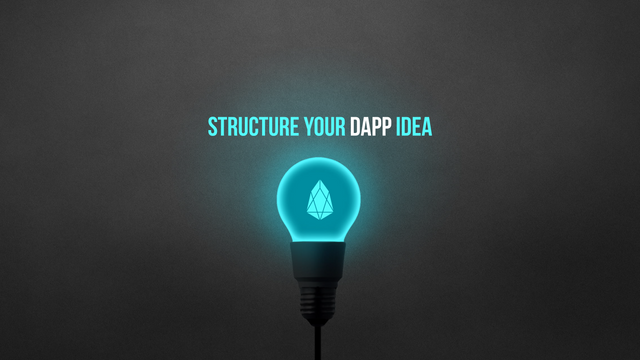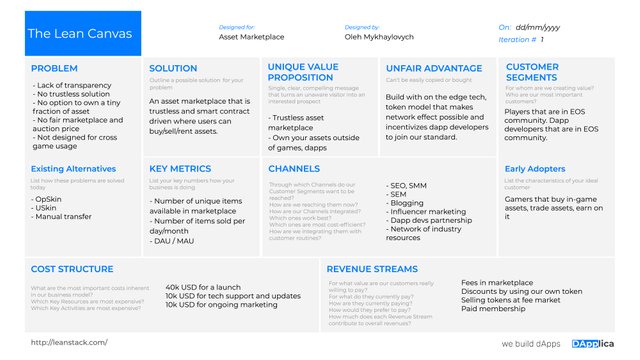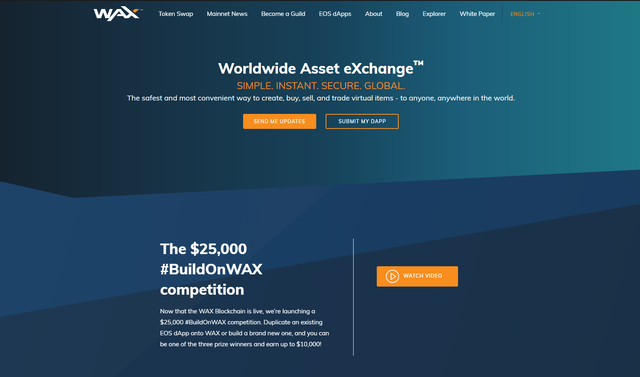
EOS has great potential, we can even say that potentially EOS is a new Silicon Valley. But, like any other market, EOS has its life cycle with birth, development and sustainable maturity. At this moment we can say that EOS market just has born. As with many new markets there are plenty of people with ideas walking around. It’s great you say, yeah but not that much.
As a dApp development company Dapplica receiving a lot of requests. Guys with ideas normally knock into your door as service business and say: “I have an idea! What would be the cost?”
Customer with idea normally has small details of what they want and most likely thin budget that should be fit in complex blockchain development solution. So now you can feel, are you glad for this kind of customer?
Does your idea have value?
In order to push average market buyer, we would like to outline some of the first steps you need to proceed to understand if your idea has value. At Dapplica we can also consult customers at some nominal fee and walkthrough idea, as we saw, seeing number of projects and being here from EOS inception we know what works and what doesn’t.
By the way if you need any consultancy about your EOS dapp idea, you can make a request or contact Dapplica here.
How to formalize your idea? Let’s cope with it now. We will take a typical dApp that might be developed on EOS and use business model canvas template named “Lean Canvas”.
Lean Canvas is a 1-page business plan template that helps you deconstruct your idea into its key assumptions. We will use a case of Decentralized assets dApp as an example.
What is Decentralized assets dApp?
Number of games has assets inside and it’s common known issue about ownership, transferability of those items. There are several projects that trying to solve that issue by connecting centralized assets with their decentralized copy. Still, there is a niche of decentralized assets only, let’s say for gaming.

All Lean Canvas key metrics will be described below. Look carefully through all these metrics and you will be able to prepare a Lean Canvas page for your project by your own.
1. Problem
When you start to create a Lean Canvas, the first thing you need to think about is a problem, which is solved by your idea.
The audience for gaming assets marketplace is gamers.
Gamers facing a lot of problems with assets they own:
- Lack of transparency with owning digital assets
- No trustless solution to exchange asset for money or any other form of goods. Some of gaming platforms can ban for that activity
- Asset markets that exist are hard to use because of no straightforward solution
- Unable to own a tiny fraction of asset
- Lack of transparent marketplace and auction pricing
- Traditionally not designed for cross game usage
Existing Alternatives
USkin, OpSkin are examples of centralized asset stores. As being said those are having known limitations, as they heavily rely on games that are somehow allowing exchange/ trading of in-game assets (or even trading game accounts in general).
Indirect competition is also manual transfer from user to user (either asset or account) which is considered very risky.
2. Solution
An asset marketplace that is trustless and smart contract driven where users can buy/sell/rent assets. Asset works on EOS blockchain, so it proposes own open-source NFT (non fungible token) or FT (fungible token) standard and supports some other common ones.
3. Key Metrics
- Number of unique items available in the marketplace — primary metric
- Number of items sold per day/month
- DAU / MAU
4. Unique Value Proposition
For our asset marketplace such advantages are:
- Trustless asset marketplace
- Own your assets outside of games, dapps
5. Unfair advantages
It’s not an easy one. First of all to find such. If all the same you managed to find this advantage — you need to protect it. Ideal approach in classic startup market is to have a patent, however it’s not an option for many projects.
Speaking about our example:
As we are software project that solves something in a new way, our option is to get first and early on fast and reliable blockchain. It is essential to create network effect first by providing right token model and incentive dapp developers to join our standards.
6. Channels
Channels for Assets marketplace are:
- Partnership with main market players: portals like Blocks.io, dapp.com, game dev magazines, Dappradar …etc
- Partnership with dapp developers to encourage them recognising us as their preferred standard and marketplace. * * * * Rewards in the form of tokens will be granted.
- Ads, some of target partners might offer ads which might work as well
- Guest Posts, Guest Blogs
- Influencers. It’s really new market and there are new and hungry bloggers in EOS space and crypto space that might make review even for free.
- Community support, SMM
7. Customer segments
As any marketplace we are in the need of users, however users can get assets from dapp developers. So we should work with both segments on the long run.
So we can define 2 segments:
- Cryptogamers
- dApp developers
Gamers would like to see big turnover of assets at our platform and understand it works for them, developers should create games that incentivize buying/creating unique assets (content).
Early adopters
Players that are:
— Willing to play and buy/spend on in-game assets
— Willing to earn on assets by trading them on secondary marketsDapp developers that willing to take risk by receiving your tokens and integrating with your marketplace and standard
8. Cost Structure
Main costs will be to launch version one of marketplace, and then ongoing support. We will need some ongoing costs to pursue marketing, write use cases as well.
Let’s estimate our costs:
- Marketplace v 1.0. Launch — 40 000 USD in general
- Ongoing technical support — 10 000 USD per month
- Ongoing marketing — 10 000 USD per month
9. Revenue Streams
To define revenue streams, answer the following questions:
- For what value customers are willing to pay?
- For what they pay already?
- Preferable ways of paying?
- What are different revenue streams?
Fees
As we are marketplace we should first of all take fees from every transaction.
Token monetization
Also we will monetize on our token, by having it users will be able to have discounted fees, we can burn our token as a result.
Premium membership
Another option that users are willing to pay and use is premium membership, let’s say they will be notified about hot and top things in assets and auctions premium places to bid.
Conclusions
Lean Canvas approach can help you to build and outline your business in one paper. So you can now imagine how it should work as a whole system and iterate, improve it over time. Business model canvas can save your time and create a clearer picture of the project.
Here you can find an editable Lean Canvas template form. Thanks Lean Stack for this useful and convenient approach!
If you have enough time, you can actually create a Lean Canvas for each customer segment. It might work when you have different users like B2C/B2B or those that have different characteristics, you communicate them differently, so each canvas will look slightly different.
For any consultancy about your EOS dapp idea or Lean Canvas approach — contact Dapplica here.
You can also get acquainted with the methods of EOS dApp promotion after launch in our previous article.
Source — https://dapplica.io/blog/eos/lean-canvas-how-to-put-your-eos-dapp-business-model-on-one-page/

Dapplica — dApps development company
blockchain | AI & ML | enterprise solutions
dapplica.io

Congratulations @dapplica! You received a personal award!
You can view your badges on your Steem Board and compare to others on the Steem Ranking
Do not miss the last post from @steemitboard:
Vote for @Steemitboard as a witness to get one more award and increased upvotes!
Downvoting a post can decrease pending rewards and make it less visible. Common reasons:
Submit